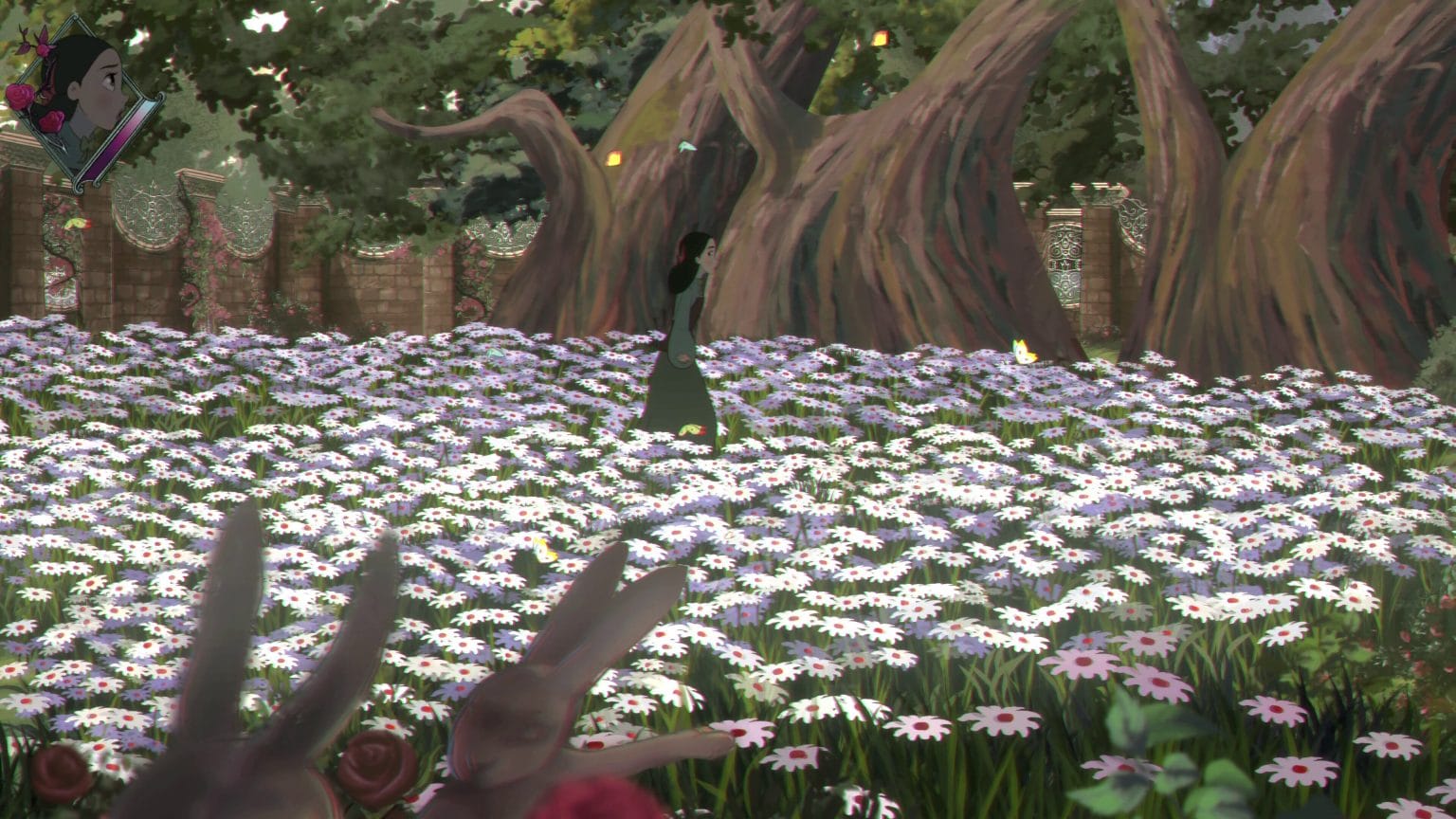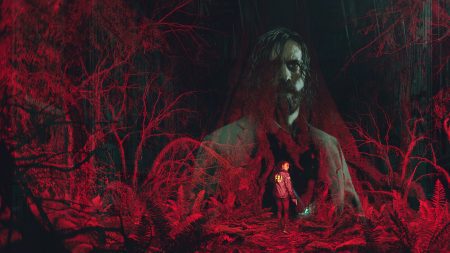I have always been struck by the beauty of Disney’s horror catalogue. To younger readers, this may come as a surprise: Disney made horror films and shorts that were not merely Haunted Mansion remakes or Simpsons episodes. Disney’s horror shorts include the iconic “Skeleton Dance” (1929), as well as “Night on Bald Mountain,” which released as part of Fantasia (1940). These, of course, do not account for the “incidental” horror films, like Black Cauldron (1985) or the truly spine-chilling The Secret of Nimh (1982).
Due to this lifelong fascination, I was thrilled to see that developer Little Sewing Machine was developing the hand-drawn horror game Bye Sweet Carole. The game looks the part, beautifully rendered for those of us nostalgic for 20th-century Disney animated films. It even features Disney-esque singing.
Sadly, the art and the music are where my love for Bye Sweet Carole ends. After 12 hours of “play” and two complete restarts due to glitches, my fascination has turned to frustration. Bye Sweet Carole is a beautiful mess that horrifies in all of the wrong ways.
The art and the music are where my love for Bye Sweet Carole ends.
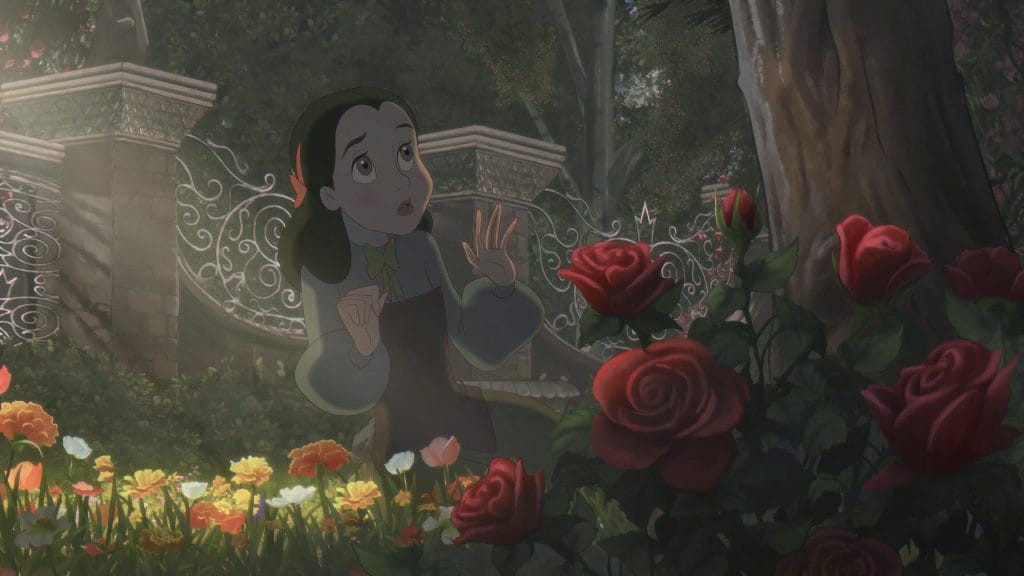
Centering Grief
Bye Sweet Carole follows Lana Benton’s heart-wrenching search for beloved friend Carole Simmons. Lana’s time is spent between two worlds: the grueling reality of the Bunny Hall Orphanage and the fairy-tale-like Kingdom of Corolla.
Lana’s story oscillates between heartfelt and melodramatic. When the writing is at its best, I empathize with Lana’s grief for her missing friend and her outsider status among her peers at Bunny Hall. For much of the game, however, I felt little for the game’s characters or situations. Many characters are portrayed as virtually irredeemable — mere monsters for Lana to run and hide from.
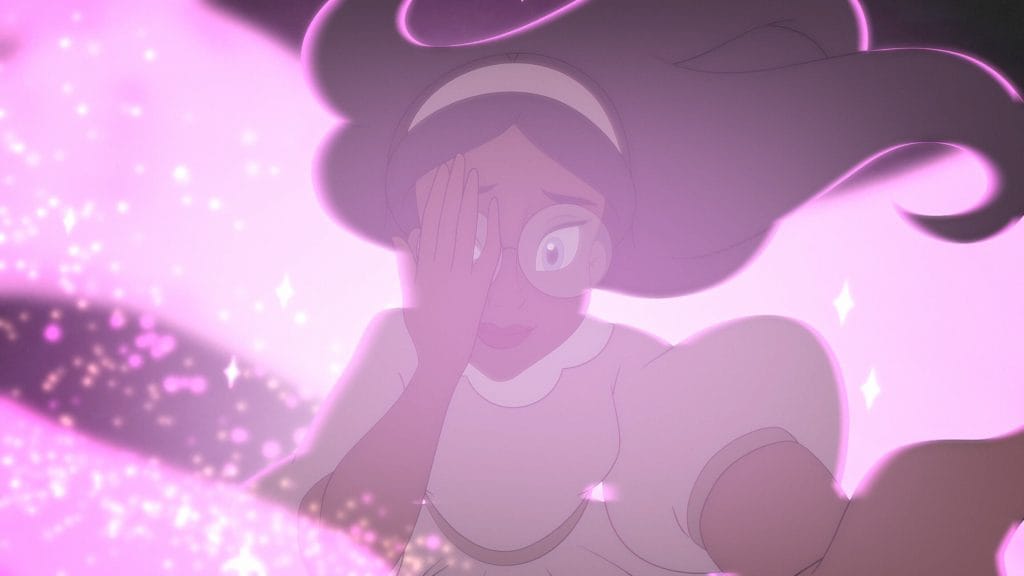
I spent much of my time with Bye Sweet Carole’s narrative about grief by meditating on what could have been. The game could probably be completed in around four hours, but even that feels too long with how little time we spend with its intricately drawn cast — including the terrifying bunny Ms. Fisherin, the handsome aristocrat Lord Dewitt, or the kind Ms. Josephine. Each character is underutilized to fulfill mere trope roles.
I spent much of my time with Bye Sweet Carole’s narrative about grief by meditating on what could have been.
The hand-drawn artwork is stunning, with excellent shading and shadows to really channel that Disney vibe. The art breathes life into otherwise pretty lifeless writing. Each cutscene feels expertly crafted by animators of a different century, but the heart that made those stories and films unforgettable is missing in Bye Sweet Carole.

Side-Scrolling Misery
The gameplay of Bye Sweet Carole is even less satisfying than its writing. The character models and backgrounds during gameplay share the same amount of magic as the game’s cutscenes. Unfortunately, this magic is robbed by repetitive 2D side-scrolling and luring monsters.
Much of the gameplay loop per level revolves around two things: going through a set of rooms over and over to find key items for puzzles, and being hunted by a creature. To be fair, this same argument could be used to criticize games like Resident Evil 7: Biohazard or Luigi’s Mansion. The difference with those titles is that I (as player) never felt trapped by the Baker Family members or by ghosts; I grew to dread every creature in Bye Sweet Carole. I not only felt trapped if they were heading toward me, but hiding from them required such careful timing that success felt like mere luck.
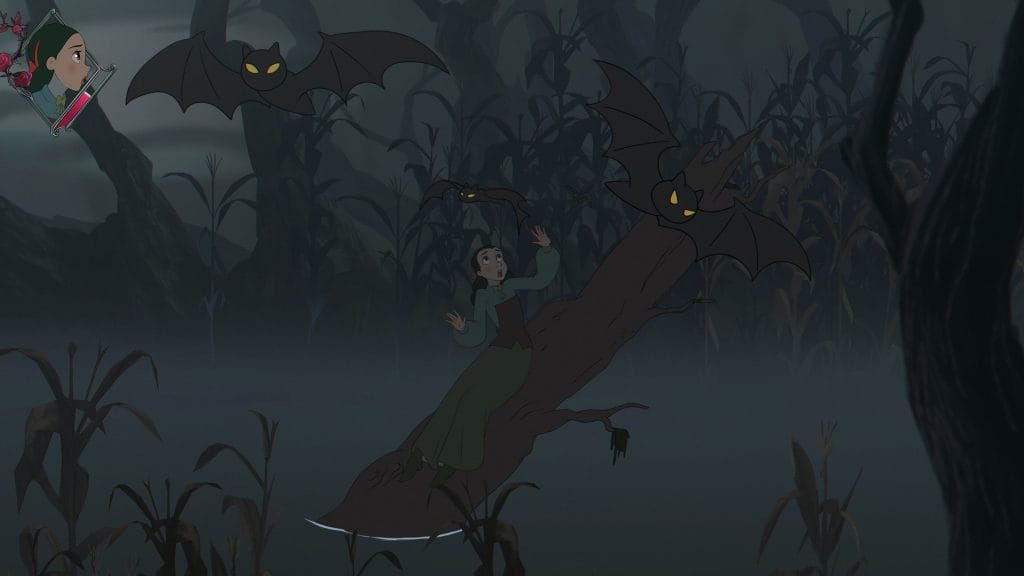
The puzzles were mostly pretty straightforward; most consisted of side-scrolling fetch quests designed to move the experience just a little bit further. The real monster here became the glitches. On three occasions, I would use an object only for it to disappear. During one of these glitches, I simply switched from my PC to my Steam Deck and the item magically reappeared in my inventory. But the other two times forced a complete restart of the game, since Bye Sweet Carole does not have a chapter-select feature.
The other two [glitches] forced a complete restart of the game, since Bye Sweet Carole does not have a chapter-select feature.
My favorite sequences required Lana to transform into a bunny. Lana acquires this ability early on in Bye Sweet Carole, and the transformation animation made me smile throughout the game. Lana can transform into her bunny form at any point (with a little help from a magic ribbon), giving her the ability to jump and hide under furniture. This charm isn’t enough, though, to carry the 2D side-scrolling even if it does add a touch of much-needed magic.
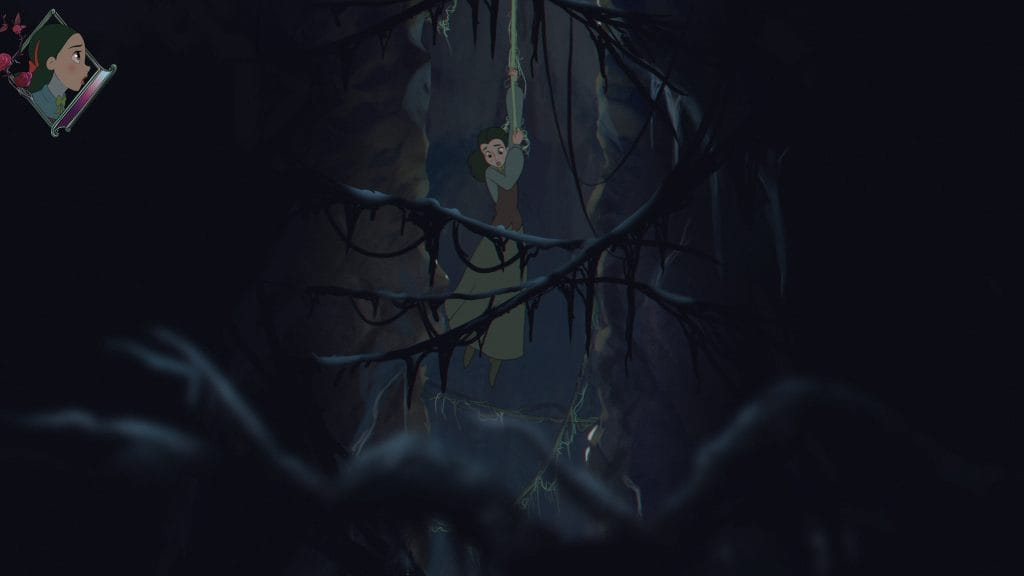
Final Thoughts
During an early sequence in Bye Sweet Carole, Lana chases a letter that just keeps blowing beyond her reach. The game would go on to repeat this sequence amid different backdrops. Lana clings to the idea of catching these floating pieces of paper just like she hopes to be reunited with her beloved friend Carole.
The sequence makes for a nice metaphor for my feelings about the game. I can’t help but feel this same sense of hopelessness at the end of my time with Bye Sweet Carole. I chased the experience of a time in the past, a nostalgia for hand-drawn animated media and some childhood-like scares. Each time the experience got close, something would blow that hope a little further, whether it was an annoying monster that felt unavoidable in the game’s level design or a glitch that made progress impossible.
I never caught up with my metaphorical flying piece of paper. In reality, Bye Sweet Carole is an intricately animated experience that hides a disappointingly broken experience.
Score: 4.0/10
Bye Sweet Carole, developed by Little Sewing Machine and published by Maximum Entertainment, released on October 9, 2025, for PC (via Steam), PlayStation 4 & 5, Xbox Series X/S, Xbox One, and Nintendo Switch. MSRP: $24.99. Version reviewed: PC (via both PC and Steam Deck).
Disclaimer: A review code was provided by the publisher.
Clint is a writer and educator based out of Columbus, OH. You can often find him writing about Middle English poetry, medieval games, or video games. He just finished a PhD in English at the Ohio State University. You can find his academic and public work at clintmorrisonjr.com.


